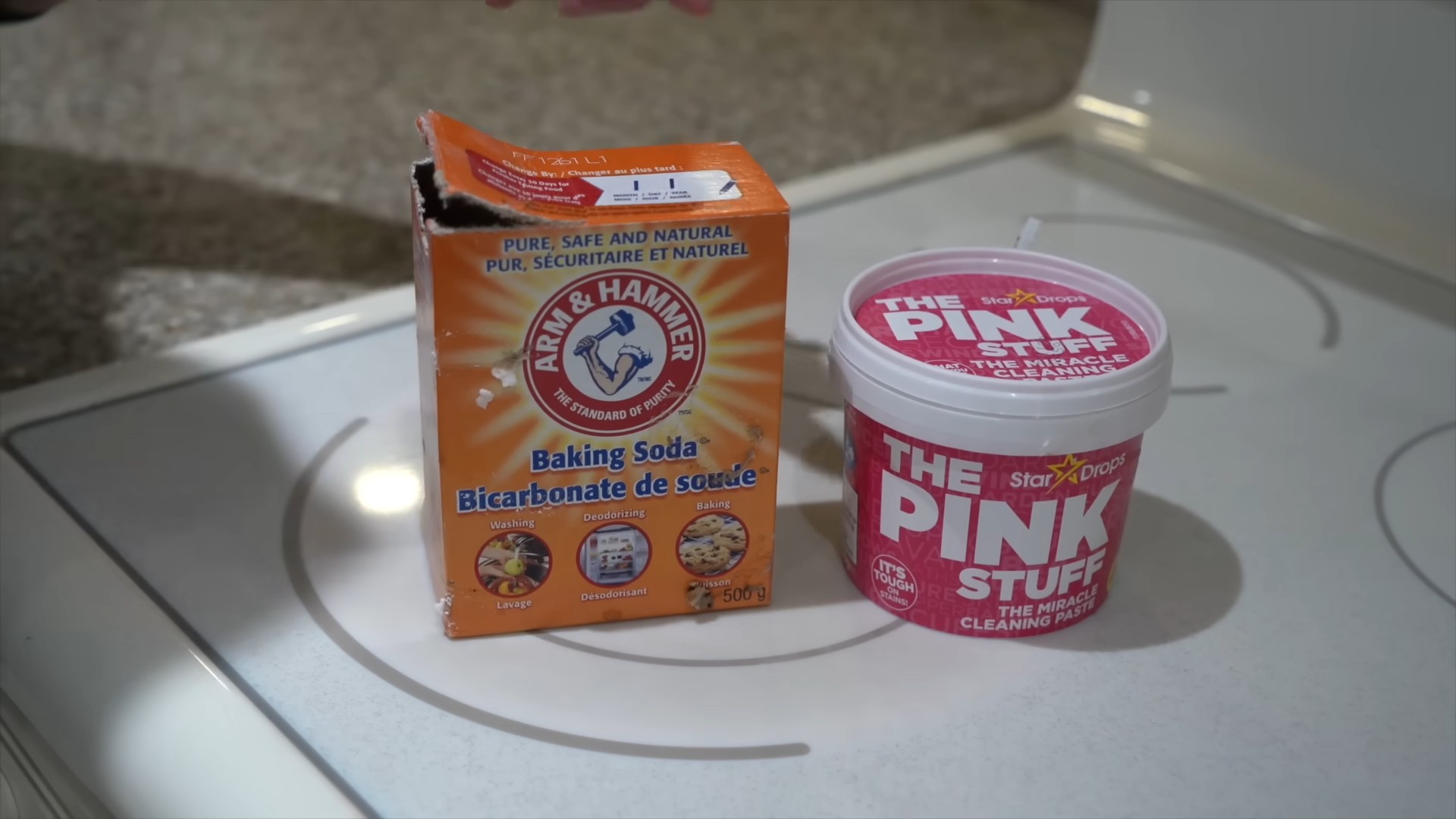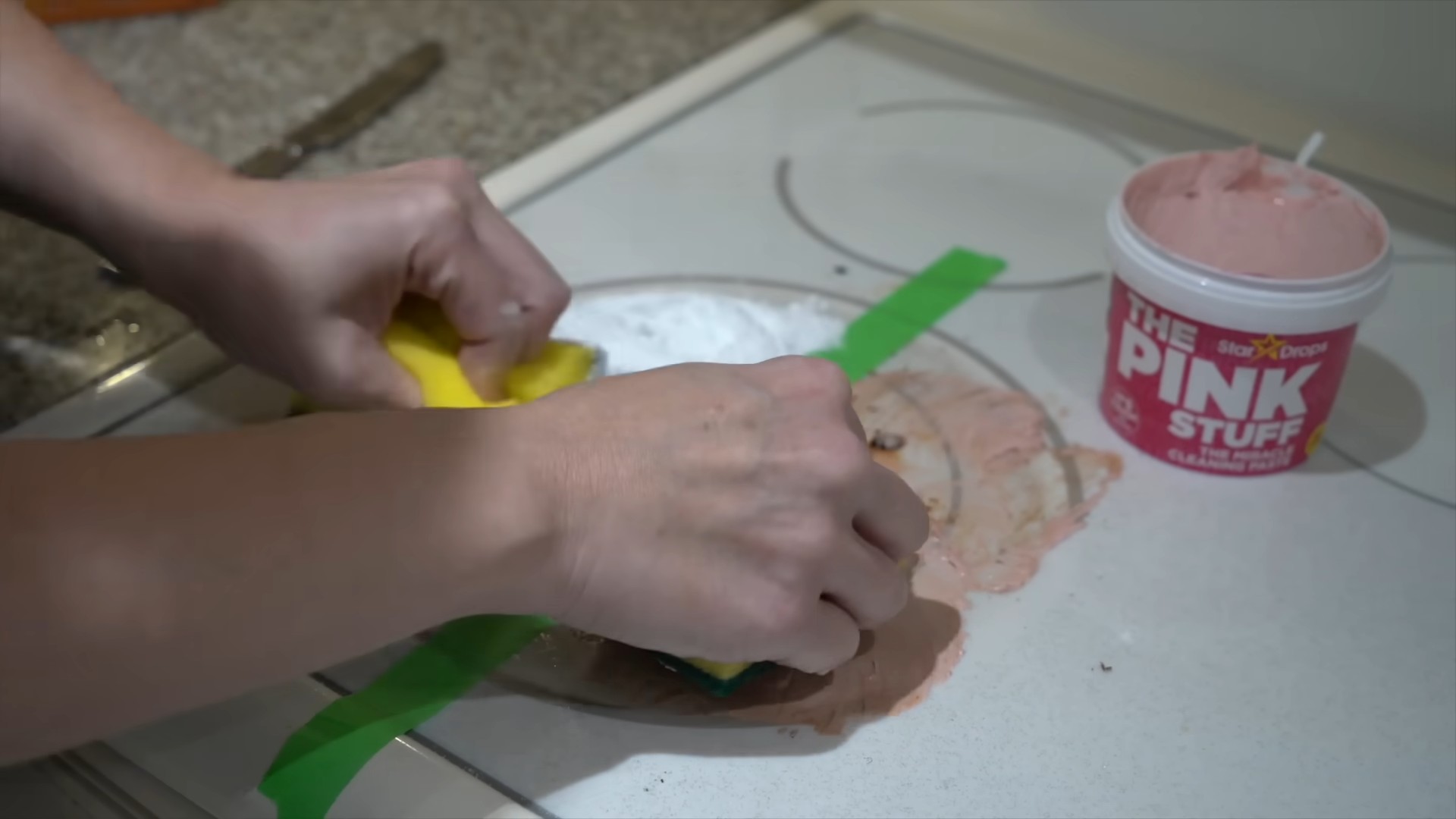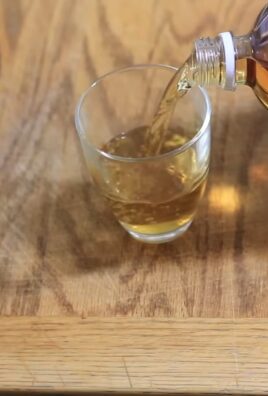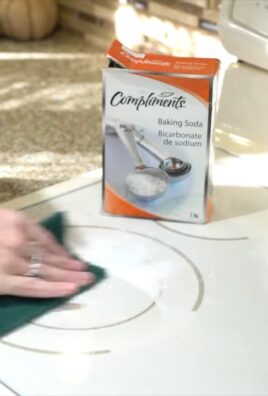Baking Soda Cleaning Hacks: Unlock the sparkling potential of your home with this ultimate guide! Are you tired of harsh chemicals and expensive cleaning products that promise the world but deliver little? Imagine a world where a simple, affordable powder could tackle everything from stubborn stains to lingering odors. Well, stop imagining, because that world is here! For generations, baking soda, also known as sodium bicarbonate, has been a staple in households worldwide. From ancient Egyptians using it in cleaning rituals to our grandmothers relying on it for everything from baking to brushing their teeth, baking soda boasts a rich history of versatility and effectiveness.
But why should you, in this modern age of specialized cleaners, embrace these baking soda cleaning hacks? Because they work! Not only are they budget-friendly and environmentally conscious, but they’re also incredibly effective. We’ll show you how to harness the power of this humble ingredient to conquer grime, freshen your spaces, and even boost your laundry’s cleaning power. Get ready to ditch the chemicals and embrace a cleaner, greener, and more affordable way to keep your home sparkling. Let’s dive into the amazing world of baking soda and discover the secrets to a truly clean home!

Baking Soda: Your Secret Weapon for a Sparkling Home!
Hey there, fellow DIY enthusiasts! I’m so excited to share some of my favorite baking soda cleaning hacks with you. Baking soda, or sodium bicarbonate, is seriously a miracle worker. It’s cheap, non-toxic, and incredibly versatile. Forget those expensive, chemical-laden cleaners – baking soda can tackle almost anything! Let’s dive into how you can use this humble powder to transform your home.
General Baking Soda Cleaning Tips
Before we get into specific projects, here are a few general tips to keep in mind when cleaning with baking soda:
* Always test in an inconspicuous area first: Even though baking soda is generally safe, it’s always a good idea to test it on a small, hidden area of whatever you’re cleaning to make sure it doesn’t cause any discoloration or damage.
* Use warm water: Warm water helps baking soda dissolve and work more effectively.
* Don’t mix with vinegar in a closed container: This creates carbon dioxide, which can build up pressure and potentially explode. It’s fine to use them sequentially, but not together in a sealed space.
* Rinse thoroughly: After cleaning with baking soda, always rinse the area well with clean water to remove any residue.
* Wear gloves: While baking soda is non-toxic, it can be drying to the skin, especially with prolonged use.
Cleaning Your Kitchen with Baking Soda
The kitchen is often the dirtiest room in the house, but baking soda can make cleaning it a breeze!
Cleaning the Oven
Oven cleaning is probably my least favorite chore, but baking soda makes it so much easier.
1. Prepare the oven: Remove the oven racks and any loose debris.
2. Make a baking soda paste: In a bowl, mix 1/2 cup of baking soda with enough water to form a thick paste.
3. Apply the paste: Spread the paste all over the inside of the oven, avoiding the heating elements. I usually wear gloves for this part.
4. Let it sit overnight: This is the key! Give the baking soda paste plenty of time to work its magic.
5. Scrub and wipe: The next day, use a damp sponge or cloth to scrub away the loosened grime. You might need to use a little elbow grease for stubborn spots.
6. Rinse thoroughly: Wipe the oven clean with a damp cloth until all the baking soda residue is gone.
7. Replace the racks: Put the oven racks back in, and you’re done!
Cleaning the Microwave
Microwaves can get pretty gross with splattered food and spills. Here’s how to clean yours with baking soda:
1. Make a baking soda solution: Mix 2 tablespoons of baking soda with 1 cup of water in a microwave-safe bowl.
2. Microwave the solution: Place the bowl in the microwave and heat it on high for 2-3 minutes. The steam will help loosen the grime.
3. Let it sit: Leave the bowl in the microwave for another 5-10 minutes to allow the steam to work its magic.
4. Wipe clean: Carefully remove the bowl (it will be hot!) and wipe down the inside of the microwave with a damp cloth or sponge.
5. Clean the turntable: Remove the turntable and wash it with warm, soapy water.
6. Dry and reassemble: Dry the turntable and reassemble the microwave.
Cleaning the Sink
Baking soda is great for cleaning and deodorizing your kitchen sink.
1. Sprinkle baking soda: Sprinkle a generous amount of baking soda all over the bottom of the sink.
2. Scrub with a damp sponge: Use a damp sponge or cloth to scrub the sink, paying attention to any stains or grime.
3. Rinse thoroughly: Rinse the sink with warm water until all the baking soda is gone.
4. For extra cleaning power: You can add a few drops of dish soap to the baking soda before scrubbing.
Cleaning Cutting Boards
Cutting boards, especially wooden ones, can harbor bacteria. Baking soda can help keep them clean and fresh.
1. Sprinkle baking soda: Sprinkle baking soda over the cutting board.
2. Add lemon juice (optional): For extra cleaning and deodorizing power, squeeze some lemon juice over the baking soda.
3. Scrub: Use a clean sponge or brush to scrub the cutting board.
4. Rinse thoroughly: Rinse the cutting board with warm water and let it air dry.
Cleaning Your Bathroom with Baking Soda
The bathroom is another area where baking soda can really shine.
Cleaning the Toilet
Baking soda can help clean and deodorize your toilet.
1. Pour in baking soda: Pour 1 cup of baking soda into the toilet bowl.
2. Let it sit: Let the baking soda sit for at least 30 minutes, or even overnight for a deeper clean.
3. Scrub: Use a toilet brush to scrub the bowl, paying attention to any stains or buildup.
4. Flush: Flush the toilet to rinse away the baking soda.
Cleaning the Shower and Tub
Soap scum and mildew can be a pain to remove from showers and tubs, but baking soda can help.
1. Make a baking soda paste: Mix 1/2 cup of baking soda with enough water to form a thick paste.
2. Apply the paste: Spread the paste all over the shower or tub, focusing on areas with soap scum or mildew.
3. Let it sit: Let the paste sit for at least 15-20 minutes.
4. Scrub: Use a sponge or brush to scrub the shower or tub.
5. Rinse thoroughly: Rinse the shower or tub with warm water until all the baking soda residue is gone.
Cleaning Grout
Grout can get stained and discolored over time. Baking soda can help brighten it up.
1. Make a baking soda paste: Mix 1/2 cup of baking soda with enough water to form a thick paste.
2. Apply the paste: Apply the paste to the grout lines.
3. Let it sit: Let the paste sit for at least 15-20 minutes.
4. Scrub: Use an old toothbrush or grout brush to scrub the grout lines.
5. Rinse thoroughly: Rinse the area with warm water until all the baking soda residue is gone.
Other Baking Soda Cleaning Hacks Around the House
Baking soda isn’t just for the kitchen and bathroom! Here are some other ways you can use it around the house:
Deodorizing Carpets and Rugs
Baking soda is a great natural deodorizer for carpets and rugs.
1. Sprinkle baking soda: Sprinkle a generous amount of baking soda over the carpet or rug.
2. Let it sit: Let the baking soda sit for at least 30 minutes, or even overnight for a deeper deodorizing.
3. Vacuum: Vacuum up the baking soda thoroughly.
Freshening Up Your Mattress
Just like carpets, mattresses can also benefit from a baking soda refresh.
1. Sprinkle baking soda: Sprinkle a generous amount of baking soda over the mattress.
2. Let it sit: Let the baking soda sit for at least 30 minutes, or even longer if possible.
3. Vacuum: Vacuum up the baking soda thoroughly.
Cleaning and Deodorizing Your Refrigerator
Baking soda is a safe and effective way to clean and deodorize your refrigerator.
1. Remove food: Remove all food items from the refrigerator.
2. Make a baking soda solution: Mix 1 tablespoon of baking soda with 1 quart of warm water.
3. Wipe down surfaces: Use a sponge or cloth to wipe down all the interior surfaces of the refrigerator with the baking soda solution.
4. Rinse: Rinse the surfaces with clean water.
5. Replace food: Replace the food items in the refrigerator.
6. Place an open box of baking soda: Place an open box of baking soda in the refrigerator to absorb odors. Replace the box every few months.
Removing Stains from Clothing
Baking soda can help remove certain stains from clothing.
1. Make a baking soda paste: Mix baking soda with a little water to form a paste.
2. Apply to stain: Apply the paste to the stain and let it sit for 15-30 minutes.
3. Launder as usual: Launder the garment as usual.
Cleaning Silverware
Tarnished silverware can be easily cleaned with baking soda.
1. Line a

Conclusion
So, there you have it! Unleashing the power of baking soda for cleaning is not just a trend; it’s a revolution in how we approach household chores. We’ve explored a range of applications, from tackling stubborn oven grime to revitalizing dull laundry, all with one simple, inexpensive ingredient. The beauty of these baking soda cleaning hacks lies in their simplicity, affordability, and eco-friendliness. You’re not just cleaning; you’re contributing to a healthier home and a more sustainable planet by reducing your reliance on harsh chemicals.
But why is this a must-try? Because it works! You’ll be amazed at the cleaning power packed into this unassuming white powder. It’s a gentle abrasive, a natural deodorizer, and a powerful alkali that cuts through grease and grime like a champ. Plus, it’s safe to use around children and pets, a huge bonus for families.
Don’t be afraid to experiment and adapt these techniques to your specific needs. For instance, if you’re dealing with particularly stubborn stains on your grout, try making a paste of baking soda and hydrogen peroxide, letting it sit for a longer period before scrubbing. Or, if you want to add a fresh scent to your baking soda cleaning solution, a few drops of your favorite essential oil can do the trick. Lemon, lavender, and tea tree oil are all excellent choices for their cleaning and aromatherapy benefits.
Consider these variations:
* **Baking Soda and Vinegar Power Duo:** While not for use in closed containers (remember the volcano experiment?), the combination of baking soda and vinegar creates a fizzing action that’s perfect for unclogging drains. Follow with hot water for optimal results.
* **Baking Soda and Lemon Juice Brightener:** For whitening sinks and countertops, a paste of baking soda and lemon juice is a natural and effective alternative to bleach. The citric acid in lemon juice enhances the cleaning power of baking soda and leaves a fresh, citrusy scent.
* **Baking Soda and Castile Soap All-Purpose Cleaner:** For a gentle yet effective all-purpose cleaner, mix baking soda with castile soap and water. This solution is safe for use on most surfaces and is perfect for everyday cleaning tasks.
We’re confident that once you experience the cleaning prowess of baking soda, you’ll be hooked. It’s a game-changer for anyone looking for a natural, effective, and affordable way to keep their home sparkling clean.
So, what are you waiting for? Grab that box of baking soda and get cleaning! We encourage you to try these DIY tricks and share your experiences with us. Let us know what worked best for you, any variations you discovered, and any before-and-after photos you’re willing to share. Your insights will help others discover the amazing potential of baking soda cleaning hacks and create a cleaner, healthier home for everyone. Share your tips and tricks in the comments below!
Frequently Asked Questions (FAQ)
Is baking soda safe to use on all surfaces?
While baking soda is generally safe and gentle, it’s always a good idea to test it on an inconspicuous area first, especially on delicate surfaces like polished wood or certain types of stone. Baking soda is mildly abrasive, so excessive scrubbing on these surfaces could potentially cause scratches. Avoid using baking soda on aluminum, as it can cause discoloration. For surfaces you’re unsure about, dilute the baking soda with water to create a less abrasive solution.
Can I mix baking soda with other cleaning products?
It’s generally not recommended to mix baking soda with certain cleaning products, especially those containing bleach or ammonia. Mixing baking soda with bleach can create toxic chlorine gas, which is extremely dangerous. Mixing baking soda with ammonia can create chloramine gas, which is also harmful. It’s best to use baking soda on its own or with natural ingredients like vinegar, lemon juice, or castile soap. Always err on the side of caution and avoid mixing chemicals unless you’re absolutely sure it’s safe.
How do I store baking soda properly?
Baking soda should be stored in a cool, dry place in an airtight container. This will help prevent it from absorbing moisture and odors from the surrounding environment. A pantry or cupboard is an ideal storage location. If you’re using baking soda to deodorize your refrigerator or freezer, replace it every three months to maintain its effectiveness.
How does baking soda work as a deodorizer?
Baking soda is a natural deodorizer because it’s amphoteric, meaning it can react with both acids and bases. Many unpleasant odors are caused by acidic or basic molecules. Baking soda neutralizes these molecules, effectively eliminating the odor rather than just masking it. This is why it’s so effective at absorbing odors in refrigerators, freezers, and other enclosed spaces.
Can baking soda be used to clean clothes?
Yes, baking soda can be a great addition to your laundry routine. It can help brighten whites, remove stains, and deodorize clothes. Add half a cup of baking soda to your washing machine along with your regular detergent. For stubborn stains, make a paste of baking soda and water and apply it directly to the stain before washing. Baking soda is also a great alternative to fabric softener.
Is baking soda the same as baking powder?
No, baking soda and baking powder are not the same thing. Baking soda is pure sodium bicarbonate, while baking powder contains sodium bicarbonate plus an acidifying agent, such as cream of tartar, and a drying agent. Baking powder is used as a leavening agent in baking, while baking soda has a wider range of uses, including cleaning and deodorizing. While they might look similar, they have different chemical compositions and functions.
How often should I use baking soda for cleaning?
The frequency of using baking soda for cleaning depends on the specific task and your personal preferences. For everyday cleaning tasks, such as wiping down countertops or cleaning sinks, you can use baking soda as often as needed. For more intensive cleaning tasks, such as cleaning ovens or unclogging drains, you may only need to use baking soda once a month or as needed. Pay attention to the surfaces you’re cleaning and adjust the frequency accordingly.
What are the environmental benefits of using baking soda for cleaning?
Using baking soda for cleaning is an environmentally friendly choice because it’s a natural, non-toxic substance. Unlike many commercial cleaning products, baking soda doesn’t contain harsh chemicals that can pollute waterways and harm aquatic life. It’s also biodegradable, meaning it breaks down naturally in the environment. By choosing baking soda over chemical-laden cleaners, you’re reducing your environmental footprint and contributing to a healthier planet.
Can baking soda remove hard water stains?
Yes, baking soda can help remove hard water stains. Hard water stains are caused by mineral deposits, and baking soda’s mild abrasive properties can help loosen and lift these deposits. Make a paste of baking soda and water, apply it to the stained area, let it sit for a few minutes, and then scrub gently. Rinse thoroughly with water. For tougher stains, you can add a little vinegar to the paste.
What is the best way to clean a burnt pot with baking soda?
To clean a burnt pot with baking soda, first, fill the pot with water and add a few tablespoons of baking soda. Bring the mixture to a boil and then simmer for about 15 minutes. This will help loosen the burnt food particles. After simmering, let the pot cool slightly and then scrub with a non-abrasive sponge or brush. For stubborn burnt spots, you can make a paste of baking soda and water and apply it directly to the area, letting it sit for a longer period before scrubbing.





Leave a Comment